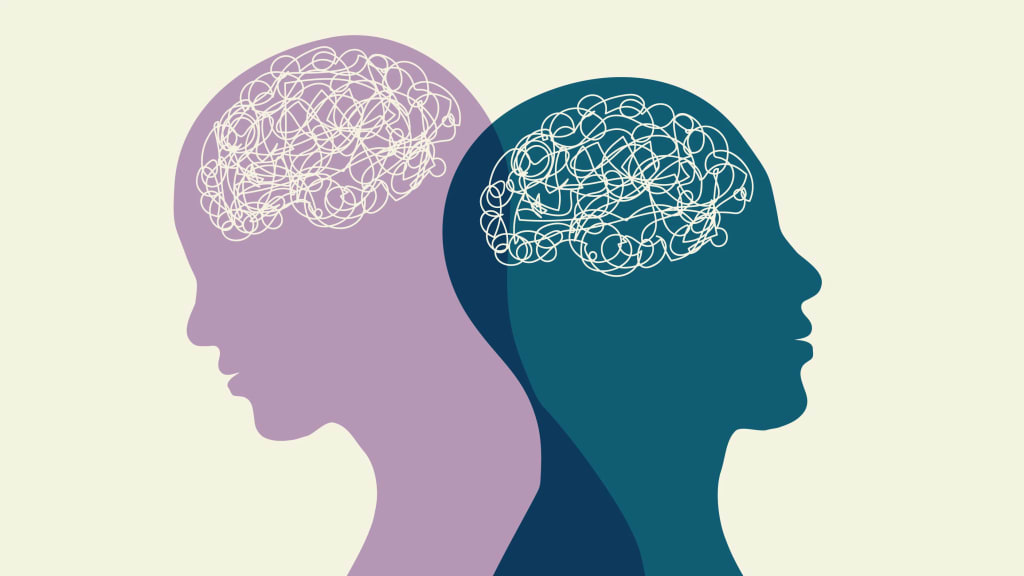The Neurobiology of Depression
A New Era of Psychiatry

Depression is a pervasive and debilitating mental health condition that affects millions of people worldwide. The current standard of care for the treatment of depression is largely based on the monoamine deficiency hypothesis. This hypothesis, which has dominated psychiatric thinking for decades, presumes that one of three key neurotransmitters in the brain—serotonin, norepinephrine, or dopamine—is deficient or underactive. This framework has shaped the development and use of many antidepressant medications that aim to correct these supposed deficiencies.
Neurotransmitters can be thought of as the chemical messengers within the brain. They are critical for communication between neurons, the cells that make up the brain and nervous system. This communication allows the brain to function correctly, enabling everything from basic bodily functions to complex thoughts and emotions. Essentially, neurotransmitters help one neuron communicate with another to pass along a message. They play a crucial role in mood regulation, perception, and behavior.
However, it is important to recognize that the brain's neurochemical environment is exceedingly complex. There are more than a hundred different neurotransmitters in the brain, each contributing to the vast and intricate web of neural communication. Additionally, there are billions of connections, or synapses, between neurons. These connections form dynamic networks that are continuously changing and adapting in response to new information and experiences. Given this complexity, it becomes clear that the monoamine deficiency hypothesis is a limited and somewhat reductionist perspective on the neurobiology of depression.
For decades, the prevailing belief in psychiatry was that the primary cause of depression was an abnormality in the levels or functioning of the neurotransmitters serotonin or norepinephrine. This belief was supported by the observed effects of early antidepressant medications, which increased the availability of these neurotransmitters in the brain and often resulted in mood improvements. However, as our understanding of the brain has deepened, it has become apparent that serotonin and norepinephrine alone cannot account for the full spectrum of depressive symptoms experienced by individuals with major depression.
Recent research has identified other chemical messengers, such as glutamate and gamma-aminobutyric acid (GABA), as playing crucial roles in mood regulation and the pathology of depression. Glutamate is the most abundant excitatory neurotransmitter in the brain, meaning it generally increases the activity of neurons. In contrast, GABA is the most prevalent inhibitory neurotransmitter, generally reducing neuronal activity. These two neurotransmitters are involved in maintaining the balance of excitation and inhibition in the brain, a balance that is essential for normal cognitive and emotional functioning.
Studies have shown that in individuals with depression, there are disruptions in the levels and functioning of glutamate and GABA. These disruptions can lead to an imbalance in neural activity, contributing to the symptoms of depression. Furthermore, glutamate and GABA are involved in neuroplasticity, the brain's ability to change and adapt over time. Neuroplasticity is crucial for learning, memory, and recovery from injury, and it is increasingly recognized as an important factor in mental health. When individuals are exposed to severe and chronic stress, as is often the case with depression, the connections between neurons can become weakened or lost. This loss of synaptic connections can result in inefficient and noisy communication within the neural circuits that regulate mood and emotion.
The noisy communication in these mood-regulating circuits is believed to contribute significantly to the biology of depression. When these circuits are not functioning properly, it can lead to the symptoms commonly associated with depression, such as persistent sadness, lack of interest in activities, and difficulty concentrating. Understanding the role of glutamate, GABA, and other neurotransmitters in these processes provides a more comprehensive picture of the neurobiology of depression and opens up new avenues for treatment.
It is critical to understand the neurobiology of depression and how the brain plays a role in this mental health condition for two main reasons. First, it helps us understand how depression develops and progresses. By gaining insights into the underlying mechanisms of the disease, we can start to develop targeted treatments that address the root causes rather than just the symptoms. For instance, treatments that promote neuroplasticity and the formation of new synaptic connections may help restore normal function in the affected neural circuits.
Second, understanding the neurobiology of depression allows us to recognize the clear differences between a healthy brain and a depressed brain. Advanced imaging techniques, such as functional magnetic resonance imaging (fMRI) and positron emission tomography (PET), have revealed distinct patterns of brain activity in individuals with depression. These imaging studies show that certain areas of the brain, particularly those involved in mood regulation, are less active in depressed individuals. The exciting thing is that when depression is treated effectively, these brain patterns can normalize, and the brain can start to look and function more like a healthy brain.
Recognizing that the treatment for depression is often a long-term process is crucial because, for many people, depression is a chronic condition. This means that long-term management strategies are necessary to help individuals maintain their mental health and prevent relapse. Traditional antidepressants, such as selective serotonin reuptake inhibitors (SSRIs) and serotonin-norepinephrine reuptake inhibitors (SNRIs), have been effective for many people, but they do not work for everyone. Approximately one-third of individuals with depression do not respond adequately to these treatments, highlighting the need for new and more effective therapeutic options.
We are now entering a new era of psychiatry, one that represents a significant paradigm shift. This shift moves us away from the simplistic model of monoaminergic deficiency and towards a fuller understanding of the brain as a complex neurochemical organ. This new perspective acknowledges the intricate interplay of various neurotransmitters and the importance of neuroplasticity in mental health. It also emphasizes the need for personalized approaches to treatment that take into account the unique neurobiological characteristics of each individual with depression.
Emerging treatments for depression are already beginning to reflect this new understanding. For example, ketamine, an anesthetic drug that acts on the glutamate system, has shown rapid and robust antidepressant effects in clinical studies. Unlike traditional antidepressants, which can take weeks to become effective, ketamine can alleviate depressive symptoms within hours. This rapid action is thought to be due to its ability to enhance synaptic plasticity and restore normal communication in mood-regulating neural circuits.
Other novel treatments, such as transcranial magnetic stimulation (TMS) and deep brain stimulation (DBS), are also being explored for their potential to modulate brain activity and promote neuroplasticity in individuals with depression. These treatments offer hope for those who have not responded to conventional therapies and represent the forefront of the ongoing evolution in psychiatric care.
In conclusion, our understanding of the neurobiology of depression has grown significantly, leading to a more nuanced and comprehensive view of this complex mental health condition. By moving beyond the monoamine deficiency hypothesis and embracing a broader perspective on brain function and neurochemistry, we can develop more effective treatments and improve the lives of individuals with depression. This new era of psychiatry holds great promise for the future, offering hope and healing to those who need it most.
About the Creator
Enjoyed the story? Support the Creator.
Subscribe for free to receive all their stories in your feed. You could also pledge your support or give them a one-off tip, letting them know you appreciate their work.





Comments
There are no comments for this story
Be the first to respond and start the conversation.